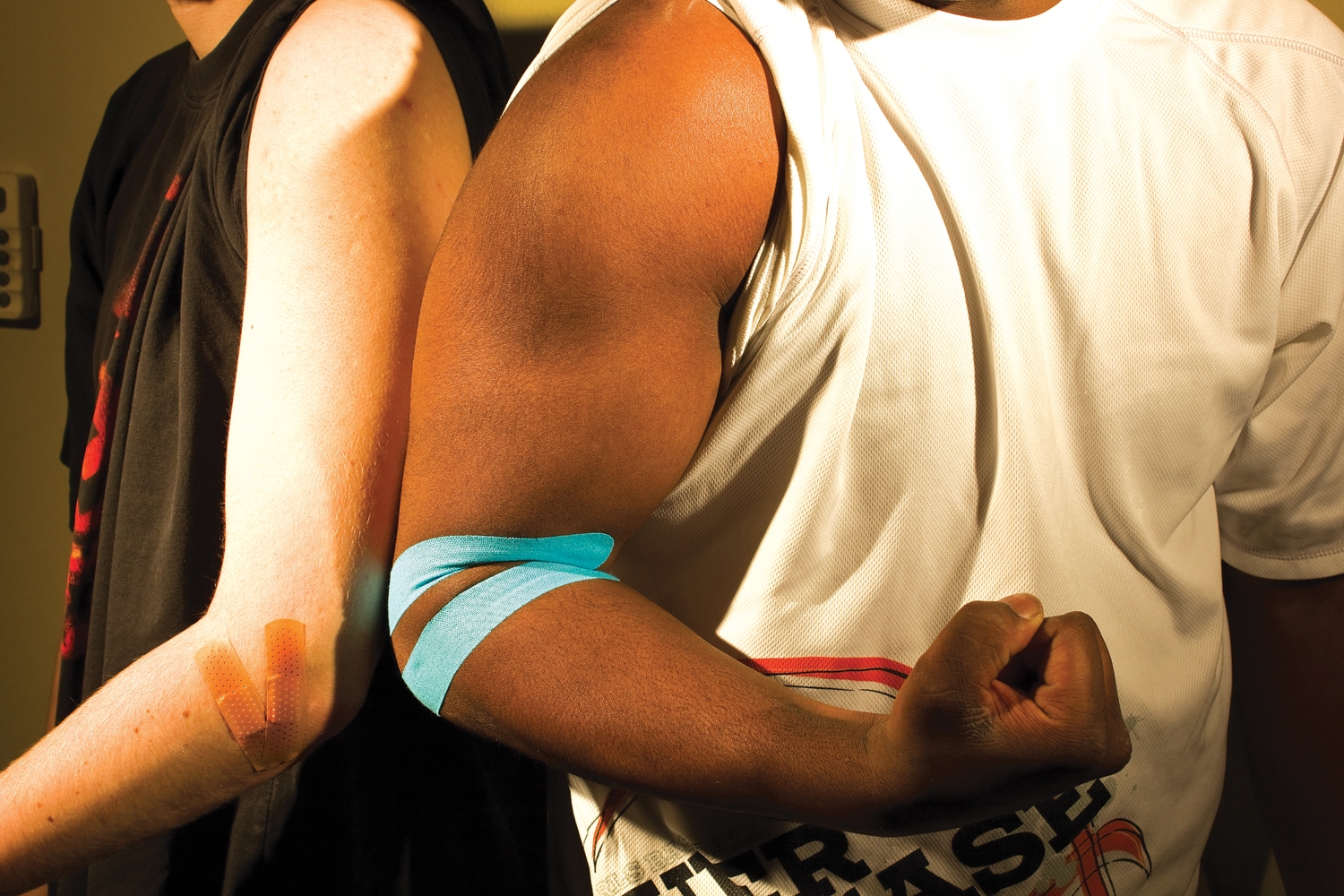Kinesiology tape eases pain, provides support, and reduces inflammation of athletic injuries
Jennifer Hart
Contributor

You may have noticed a rising trend in the accessories worn by professional athletes since the 2008 Beijing Olympics. Many athletes like Kerri Walsh, Serena Williams, David Beckham, Lance Armstrong, and the new number one tennis player, Novak Djokovic, have been seen sporting vibrant strips of tape on their skin. Is this a fashion craze? Not likely. Is this a device for easing pain? Yes, and it is known as kinesiology tape.
The tape consists of cotton elastic fabric. It contains a poly-acrylic adhesive that sticks to the skin with minimal irritation. Such applications are water-resistant, breathable, and can be worn for multiple days, if applied properly. Since it does not contain medical ingredients, it has been deemed a “legal advantage” on the playing field.
Kinesiology tape is used for a variety of conditions, especially conditions that involve pain, inflammation, and dysfunctional muscle structures that contribute to weakness. The tape cannot cure an injury, but it can help to relieve some of the associated symptoms and supply much needed support. Chiropractors refer to kinesiology taping as a “treatment between treatments,” as it provides continuous stimulation between therapy sessions. It has been advised that the tape is best used in conjunction with manual therapy.
Dr. Scott Howitt, of Gorman/Shore sports injury clinic, says that he has used kinesiology tape on a few athletes. “I use it most commonly for Achilles tendon or calf strains. I also use the lymphatic drainage approach of kinesiology tape to assist in minimizing inflammation in acute injuries such as ankle and knee sprains or thigh contusions.”
How Kinesiology Tape Works
EASES PAIN
The tactile stimulation of the tape on the skin activates receptors to initiate a healing process. Essentially, pain pathways are blocked causing a change in m
uscle firing patterns, therefore decreasing the subjective feeling of pain.
SUPPORT
The tension of the tape helps to prevent over-extension, in turn providing protection during one’s healing stage. The enhanced support often increases one’s sense of stability. Kinesiology tape does not hold like a mechanical brace, but it helps to promote a safer range of motion plus a healthier posture.
CIRCULATION
Kinesiology tape is designed to lift the skin, allowing more oxygen and blood flow to circulate around the injured area. This improves fluid dynamics, ergo promoting a healthier lymphatic system. Inflammation, bruising, and edema have been observed to dissipate quicker when treated with this tape.
Unlike conventional athletic tape which compresses a joint, kinesiology tape is light as it flexibly moves with one’s body. The material of the tape has been engineered to mimic the thickness, weight, and elasticity of human skin. Kinesiology tape, together with targeted muscles, can be stretched to various points of tension to achieve the desired outcome.
Leading companies like Kinesio-Tape and KT Tape have been supplying kinesiology tape in the traditional roll format to sports-medical professionals for many years. Newer companies like RockTape and PerformTex are beginning to surface as well. Innovations in the field have been emerging since the 2008 Beijing Olympics. A Toronto-based company, SpiderTech, offers body-specific, pre-cut kinesiology taping applications that are ready-to-apply for the everyday consumer.
Although scientific evidence is still inconclusive, kinesiology tape is widely used in sports clinics around the world.


